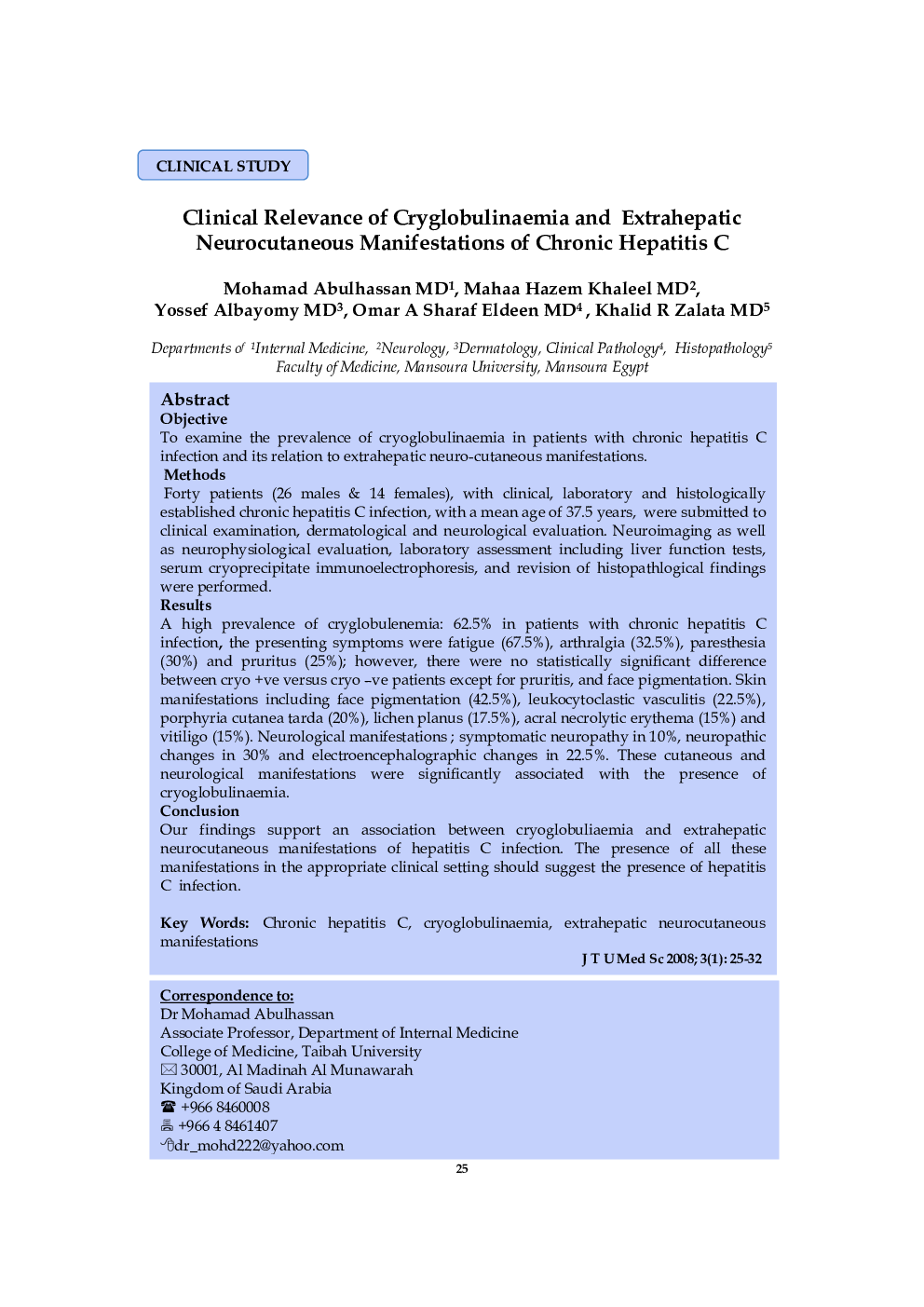| Article ID | Journal | Published Year | Pages | File Type |
|---|---|---|---|---|
| 3484597 | Journal of Taibah University Medical Sciences | 2008 | 8 Pages |
ObjectiveTo examine the prevalence of cryoglobulinaemia in patients with chronic hepatitis C infection and its relation to extrahepatic neuro-cutaneous manifestations.MethodsForty patients (26 males & 14 females), with clinical, laboratory and histologically established chronic hepatitis C infection, with a mean age of 37.5 years, were submitted to clinical examination, dermatological and neurological evaluation. Neuroimaging as well as neurophysiological evaluation, laboratory assessment including liver function tests, serum cryoprecipitate immunoelectrophoresis, and revision of histopathlogical findings were performed.ResultsA high prevalence of cryglobulenemia: 62.5% in patients with chronic hepatitis C infection, the presenting symptoms were fatigue (67.5%), arthralgia (32.5%), paresthesia (30%) and pruritus (25%); however, there were no statistically significant difference between cryo +ve versus cryo –ve patients except for pruritis, and face pigmentation. Skin manifestations including face pigmentation (42.5%), leukocytoclastic vasculitis (22.5%), porphyria cutanea tarda (20%), lichen planus (17.5%), acral necrolytic erythema (15%) and vitiligo (15%). Neurological manifestations ; symptomatic neuropathy in 10%, neuropathic changes in 30% and electroencephalographic changes in 22.5%. These cutaneous and neurological manifestations were significantly associated with the presence of cryoglobulinaemia.ConclusionOur findings support an association between cryoglobuliaemia and extrahepatic neurocutaneous manifestations of hepatitis C infection. The presence of all these manifestations in the appropriate clinical setting should suggest the presence of hepatitis C infection.
